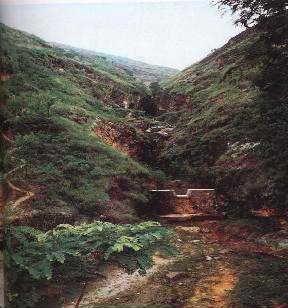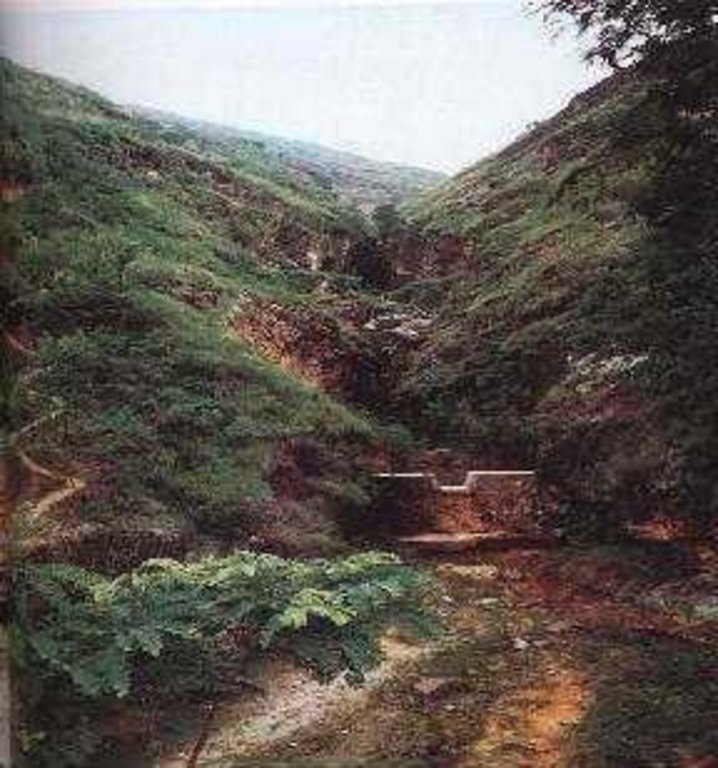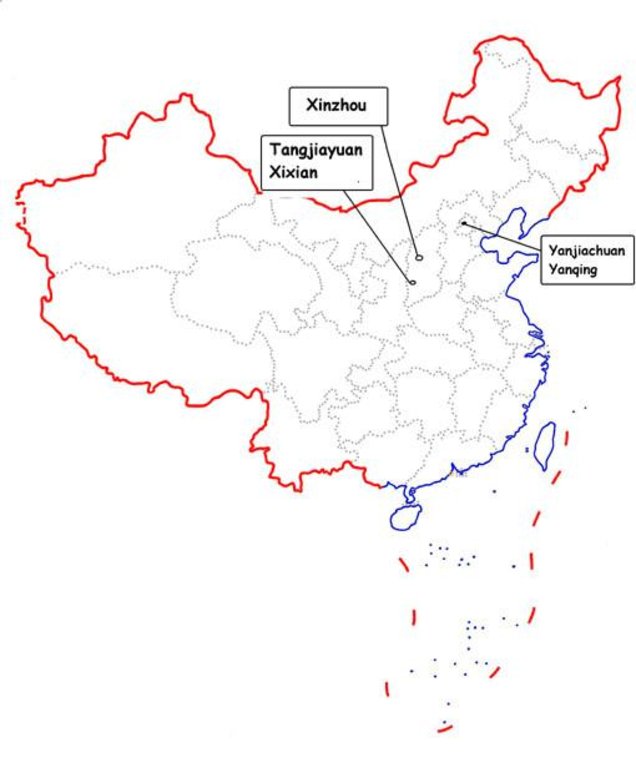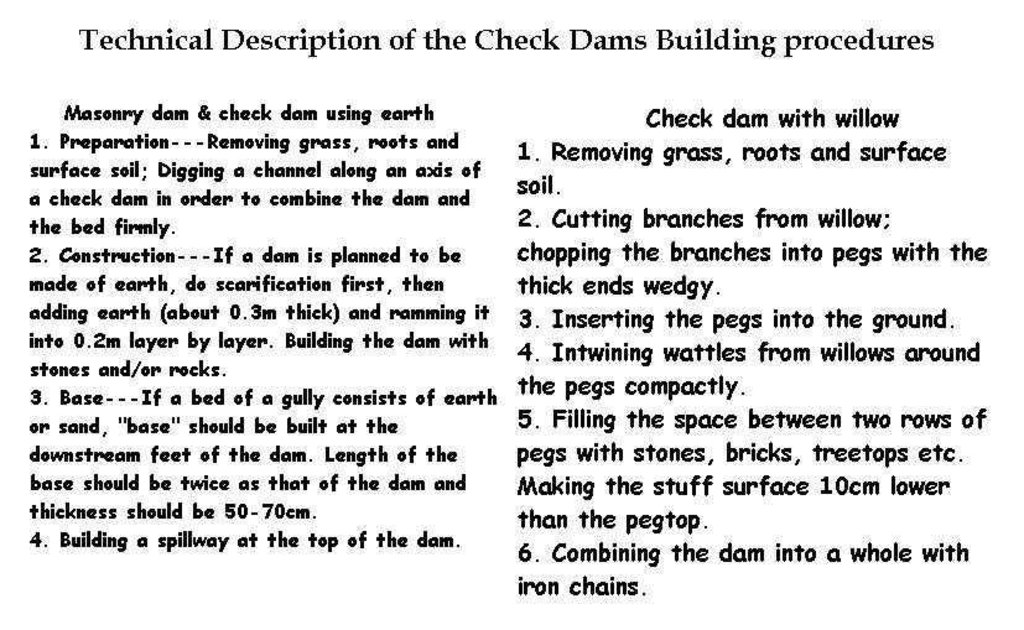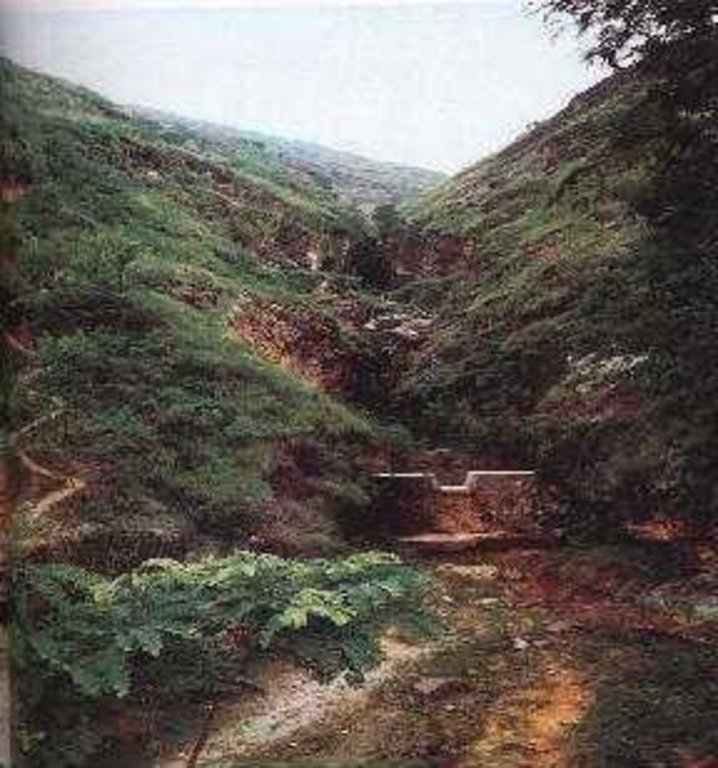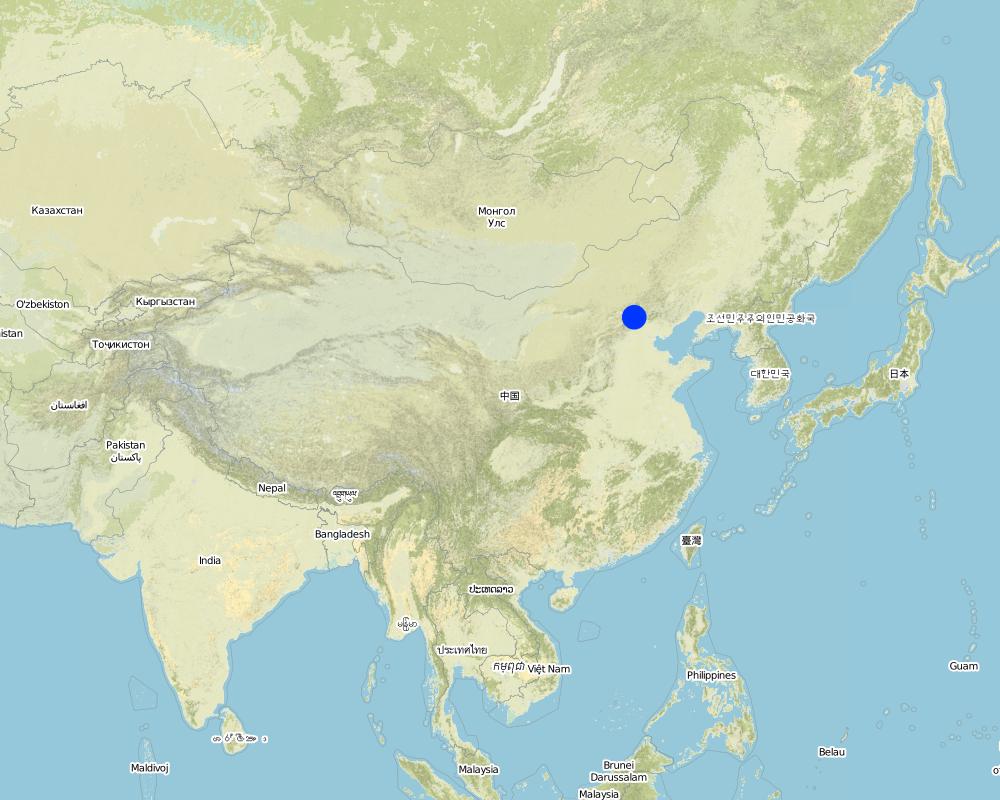Check Dam [China]
- Criação:
- Atualização:
- Compilador/a: Haiyan WEI
- Editor: –
- Revisor: David Streiff
approaches_2397 - China
Veja as seções
Expandir tudo Recolher tudo1. Informação geral
1.2 Detalhes do contato das pessoas capacitadas e instituições envolvidas na avaliação e documentação da abordagem
Especialista em GST:
Nome da(s) instituição(ões) que facilitou(ram) a documentação/avaliação da Abordagem (se relevante)
Department of Resources and Environmental Science, Beijing Normal University (Department of Resources and Environmental Science, Beijing Normal University) - China1.3 Condições em relação ao uso da informação documentada através de WOCAT
O compilador e a(s) pessoa(s) capacitada(s) aceitam as condições relativas ao uso de dados documentados através do WOCAT:
Sim
1.4 Referência ao(s) questionário(s) sobre tecnologias da GST
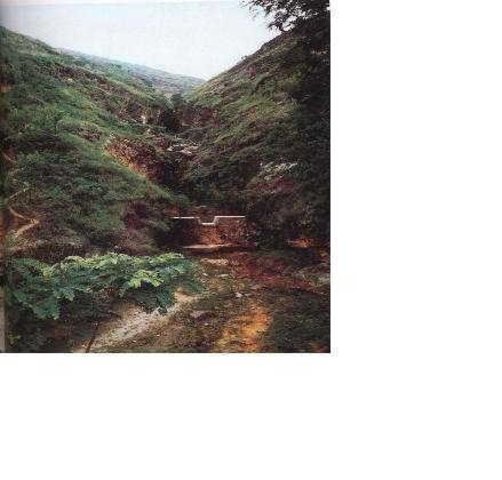
Check Dam [China]
Check dam refers to dam that constructed in the gullies or river ways and the height of the dam is often lower than 5m.
- Compilador/a: Haiyan WEI
2. Descrição da abordagem de GST
2.1 Descrição curta da abordagem
Check dam is a kind of sediment storage dam of 5m below and is built in channels to control the down cutting of channel bed.
2.2 Descrição detalhada da abordagem
Descrição detalhada da abordagem:
Aims / objectives: Xifeng county is one of the key areas of soil erosion control in China. In order to reduce the local soil erosion, and also to bring certain economic benefits to local residents, the Ministry of Water Resources is in charge of check dam construction activities.
Check dam is widely used in controlling soil erosion. The training is a main approach to promotion of the check dam technology. It is necessary to mobilize local people to participate in construction, while providing to them some cash subsidies. In such a way local people can get economic benefits, and strengthen their awareness and
knowledge of soil and water conservation.
Methods: Main objectives: (1) Elevating erosion basis of channel bed to prevent the channel down cutting and channel bank expansion, and decrease channel gradient. (2) Storing silt and reducing the amount of sediment, transported into the rivers. (3) Decreasing channel flow rates and reducing the flood risk of the lower reaches. (4) Debris flow control by use of strong permanent check dams. (5) Making channel silted to form sediment-covered terraces for future use.
Stages of implementation: Implemetation procedure: (1) site selection and design; (2) material preparation, labor recruitment and temporary road buliding; (3) main project construction.
Other important information: The construction cost of check dam is determined by project quality requirements, difficulty of construction, work size, construction technology, and some other factors. Regional factors have also an important impact. Therefore, the investment is mainly made by government with local supporting funds. Check dam construction is often
associated with plant cultivation, aquaculture design and other measures to make comprehensive use of sediment retention and water storage. It can increase agricultural productivity and farmers’ income in addition to improve local environment.
2.3 Fotos da abordagem
2.5 País/região/locais onde a abordagem foi aplicada
País:
China
Região/Estado/Província:
Shanxi, Beijing
Especificação adicional de localização:
Xifeng
Map
×2.6 Datas de início e término da abordagem
Indique o ano de início:
1960
2.7 Tipo de abordagem
- Tradicional/Indígena
2.8 Principais metas/objetivos da abordagem
The Approach focused on SLM only
1) Fixation and raise of erosion basis, preventing down cutting of channel and channel bank expansion. 2) Making channel silted to form sediment-covered terraces for farming. 3) Decreasing channel gradient and flow rates and reducing the flood risk of the lower reaches.
The SLM Approach addressed the following problems: 1) Serious debris flow which causes tremendous economic loss and threats to the residents safety. 2) Serious soil erosion, especially down cutting and expansion of gully. 3) Poor local economy, lack of funds and technology for soil erosion control.
2.9 Condição que propiciam ou inibem a implementação de tecnologia/tecnologias aplicada(s) segundo a abordagem
Normas e valores sociais/culturais/religiosos
- Inibitivo
Unawareness of soil and conservation knowledge.
Treatment through the SLM Approach: Strengthening education and training.
Disponibilidade/acesso a recursos e serviços financeiros
- Inibitivo
More investment needed for mortar stone check dam.
Treatment through the SLM Approach: Government and company investment to develop eco-industry.
Quadro jurídico (posse de terra, direitos de uso da terra e da água)
- Inibitivo
The existing land ownership, land use rights / water rights hindered a little the approach implementation The state has ownership of the land resources, land users can only lease the land for a period of time, they worry about their land would be transferred to others.
Conhecimento sobre GST, acesso a suporte técnico
- Inibitivo
Check dam design and construction need qualified technicians.
Treatment through the SLM Approach: Professionals and training.
3. Participação e papel das partes interessadas envolvidas
3.1 Partes interessadas envolvidas na abordagem e seus papéis
- Usuários de terra/comunidades locais
Working land users were mainly men (In 1960s and 1970s, the SWC activities mainly distributed and administrated to farmers to do in leisure time(winter), and grouped to build check dams, terraces, etc
Existing groups of land users;
Those who live in gully areas and have less flat crop land provide their advices and requirement to the government and decision makers.
- Governo nacional (planejadores, responsáveis pelas decisões)
3.2 Envolvimento do usuários de terra/comunidades locais nas diferentes fases da abordagem
| Envolvimento do usuários de terra/comunidades locais | Especifique quem estava envolvido e descreva as atividades | |
|---|---|---|
| Iniciação/motivação | Apoio externo | Mainly:public meetings; partly: workshops/seminars; Series of site meetings to explain the SWC to the land users. |
| Planejamento | Apoio externo | Mainly: public meetings; partly: workshops/seminars |
| Implementação | Participativo | casual labour |
| Monitoramento/avaliação | Participativo | Mainly: interviews/questionnaires; partly: reporting; |
| Research | Automobilização | on-station |
3.4 Decisão sobre a seleção de tecnologia/tecnologias de GST
Especifique quem decidiu sobre a seleção de tecnologia/tecnologias a serem implementadas:
- Políticos/líderes
Explique:
consultative.
Decisions on the method of implementing the SLM Technology were made by by politicians / leaders. directive (top-down).
4. Suporte técnico, reforço das capacidades e gestão do conhecimento
4.1 Reforço das capacidades/formação
Foi oferecida formação aos usuários da terra/outras partes interessadas?
Sim
Especifique quem foi capacitado:
- Usuários de terra
- extensionists/trainers, politicians/decision makers
Tipo de formação:
- Agricultor para agricultor
- Reuniões públicas
- Cursos
Assuntos abordados:
The approach provide the training about the technology, such as check dam dimension and materials etc.
4.2 Serviço de consultoria
Os usuários de terra têm acesso a um serviço de consultoria?
Sim
Especifique se foi oferecido serviço de consultoria:
- nas áreas dos usuários da terra
Descreva/comentários:
The Basic Farmland Construction; Key elements: Government plan, design, distribute, Farmers implement; 1) Advisory service was carried out through: government's existing extension system 2) Advisory service was carried out through: government's existing extension system; Extension staff: mainly government employees 3) Target groups for extension: land users; Activities: Field visit and demonstration
Advisory service is quite adequate to ensure the continuation of land conservation activities; At each government level, there is a SWC division which is in charge of SWC activities including extension.
4.3 Fortalecimento da instituição (desenvolvimento organizacional)
As instituições foram fortalecidas ou estabelecidas através da abordagem?
- Sim, moderadamente
Especifique a que nível (níveis) as instituições foram fortalecidas ou estabelecidas:
- Local
Especifique o tipo de apoio:
- Financeiro
- Reforço das capacidades/formação
4.4 Monitoramento e avaliação
Monitoramento e avaliação são partes da abordagem?
Sim
Comentários:
bio-physical aspects were ad hoc monitored by 0 through observations; indicators: debris flow frequency,speed,volume, time and damage
technical aspects were ad hoc monitored by 0 through observations; indicators: damage degree
socio-cultural aspects were ad hoc monitored by 0 through measurements; indicators: accredited attitude for debris flow control and part icipation in check dam building.
economic / production aspects were ad hoc monitored by 0 through observations; indicators: control area
area treated aspects were ad hoc monitored by 0 through measurements; indicators: science and rationality of Management
no. of land users involved aspects were ad hoc monitored by 0 through observations; indicators: None
management of Approach aspects were regular monitored by 0 through measurements; indicators: None
There were several changes in the Approach as a result of monitoring and evaluation: Improving the construction method so as to make the check dams much durable.
4.5 Pesquisa
A pesquisa foi parte da abordagem?
Sim
Especifique os tópicos:
- Economia/Marketing
- Ecologia
- Tecnologia
Dê mais detalhes e indique quem realizou a pesquisa:
Manual and criteria for standardization design and construction.
Research was carried out both on station and on-farm
5. Financiamento e apoio material externo
5.1 Orçamento anual para o componente de GST da abordagem
Caso o orçamento exato seja desconhecido, indique a faixa:
- 100.000-1.000.000
Comentários (p. ex. principais fontes de recursos/principais doadores):
Approach costs were met by the following donors: government (national): 90.0%; local community / land user(s) (-): 10.0%
5.2 Apoio financeiro/material concedido aos usuários da terra
Os usuários da terra receberam apoio financeiro/material para a implementação de tecnologia/tecnologias?
Sim
5.3 Subsídios para entradas específicas (incluindo mão-de-obra)
- Equipamento
| Especifique quais entradas foram subsidiadas | Em que medida | Especifique os subsídios |
|---|---|---|
| Maquinário | Totalmente financiado | |
Se a mão-de-obra pelos usuários da terra foi uma entrada substancial, isso foi:
- Pago em dinheiro
Comentários:
Before 1970s, the SWC activities were obligation, but after that some subsidies were provided by government.
Labour can also be voluntarely or rewarded with other material support
5.4 Crédito
Foi concedido crédito segundo a abordagem para atividades de GST?
Sim
Especifique as condições (taxa de juros, reembolso, etc):
Interest rate charged: 2.0%
Interest was lower than market rate.
6. Análise de impactos e declarações finais
6.1 Impactos da abordagem
A abordagem auxiliou os usuários da terra a implementar e manter as tecnologias de GST?
- Não
- Sim, pouco
- Sim, moderadamente
- Sim, significativamente
Harvesting runoff in the rainy season and making 'deposited flat land'.
A abordagem melhorou as questões de posse de terra/diretos do usuário que inibiam a implementação das tecnologias de GST?
- Não
- Sim, pouco
- Sim, moderadamente
- Sim, significativamente
The SWC activities were organized to implement by local communities which can properly deal with the relationship. The problem is likely to be overcome in the near future. The SWC applied area can be contracted for a long time between land ownership and users.
Did other land users / projects adopt the Approach?
- Não
- Sim, pouco
- Sim, moderadamente
- Sim, significativamente
The method will help to control debris flow; the check dam is widely used
6.3 Atividades de sustentabilidade de abordagem
Os usuários da terra podem manter o que foi implementado através da abordagem (sem apoio externo)?
- Sim
6.4 Pontos fortes/vantagens da abordagem
| Pontos fortes/vantagens/oportunidades na visão do usuário da terra |
|---|
| Mitigating damage caused by debris flow and floods (How to sustain/ enhance this strength: Making planning and design on watershed management) |
| Pontos fortes/vantagens/oportunidades na visão do compilador ou de outra pessoa capacitada |
|---|
| Erosion control to decrease sediment (How to sustain/ enhance this strength: Check dams building.) |
| More effective use of rainfall resources (How to sustain/ enhance this strength: Develop compound management with cultivation and aquaculture.) |
| Increasing farmer’s income (How to sustain/ enhance this strength: Completing irrigation facility and establishing economic forest) |
6.5 Pontos fracos, desvantagens da tecnologia e formas de superá-los
| Pontos fracos/desvantagens/riscos na visão do usuário da terra | Como eles podem ser superados? |
|---|---|
| After abolition of the compulsory labor and accumulative labor service, the enthusiasm and willingness of farmers to participation is lowered | Some measures shoule be taken by government at all levels to stimulte and encourage farmers to participate in the construction work |
| Pontos fracos/vantagens/riscos na visão do compilador ou de outra pessoa capacitada | Como eles podem ser superados? |
|---|---|
| Large investment. | Multi-level investment system, which includes national investment with local support, labor input by farmers, and use of foreign and social funds. |
7. Referências e links
7.1 Métodos/fontes de informação
- compilação de relatórios e outra documentação existente
7.2 Referências às publicações disponíveis
Título, autor, ano, ISBN:
Special Planning of Soil and Water Conservation in Xinzhou Region , Shanxi Province (1986-2000)
Disponível de onde? Custos?
Library of the Resource and Environmental Department of the Beijing Normal Univ.
Título, autor, ano, ISBN:
The application of the Check dam with willow in controlling gully erosion.Tu xingwen. Soil and water conservation in China, 1986.
Disponível de onde? Custos?
Library of the Resource and Environmental Department of the Beijing Normal Univ.
Título, autor, ano, ISBN:
How to design the dry masonry dam in the Hanjiachuan watershed. Tianyuzhu, Wangzuliang. Beijing. Water conservation in Beijing, 2000.3
Disponível de onde? Custos?
Library of the Resource and Environmental Department of the Beijing Normal Univ.
Título, autor, ano, ISBN:
Consideration about the check dam design and application. Liu shunzong. Soil and water conservation in China, 1990.6
Disponível de onde? Custos?
Library of the Resource and Environmental Department of the Beijing Normal Univ.
Links e módulos
Expandir tudo Recolher tudoLinks

Check Dam [China]
Check dam refers to dam that constructed in the gullies or river ways and the height of the dam is often lower than 5m.
- Compilador/a: Haiyan WEI
Módulos
Não há módulos


